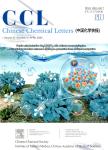Effective peroxydisulfate activation by CQDs-MnFe_(2)O_(4)@ZIF-8 catalyst for complementary degradation of bisphenol A by free radicals and non-radical pathways
作者机构:College of Chemistry and Chemical EngineeringQiqihar UniversityQiqihar 161006China State Key Laboratory of Urban Water Resource and EnvironmentSchool of EnvironmentHarbin Institute of TechnologyHarbin 150090China
出 版 物:《Chinese Chemical Letters》 (中国化学快报(英文版))
年 卷 期:2024年第35卷第5期
页 面:371-379页
核心收录:
学科分类:08[工学] 0805[工学-材料科学与工程(可授工学、理学学位)] 080502[工学-材料学] 0703[理学-化学]
基 金:supported by the National Natural Science Foundation of China(Nos.52270074,52170039 and U22A20241) the National Key Research and Development Plan“Intergovernmental International Science and Technology Innovation Cooperation”(No.2022YFE0135700) the Heilongjiang Provincial Natural Science Foundation of China(No.LH2021E117) the financial support by the University Nursing Program for Young Scholars with Creative Talents in Heilongjiang Province(No.UNPYSCT-2020068)。
主 题:Bisphenol A Degradation Peroxydisulfate ^(1)O_(2) Toxicity analysis
摘 要:The present study reported fabrication of novel carbon quantum dots-MnFe_(2)O_(4)@ZIF-8(CQDs-MFO@ZIF-8)by using co-precipitation hydrothermal method for activation of peroxydisulfate(PDS)to degrade bisphenol A(BPA),one of important emerging organic pollutants in water environment.CQDs-MFO@ZIF-8 served as a highly efficient thermal activated PDS catalyst with high catalytic degradation efficiency,reusability and stability.The catalyst achieved almost completely removal of 20.0 mg/L BPA within 5.0 min,and the degradation efficiency remained higher than 83%after 5 consecutive cycles.Free radicals(^(·)OH,SO_(4)^(·-)and^(·)O_(2)^(-))and non-free radicals((1)O_(2))were generated in the thermal PDS-activation system,in which singlet oxygen((1)O_(2))played a dominant role in the degradation of BPA.The potential toxicity of BPA degradation intermediates was analyzed upon the culture of E.coli and Chlorella sorokiniana by using Ecological Structure-Activity Relationship Model(ECOSAR)program.The catalytic performances of BPA degradation by CQDs-MFO@ZIF-8 were evaluated for treatment of different practical water samples to further verify the feasibility of practical applications.This study provides proof-in-concept demonstration of new nanomaterials for enhanced catalytic water decontamination.



